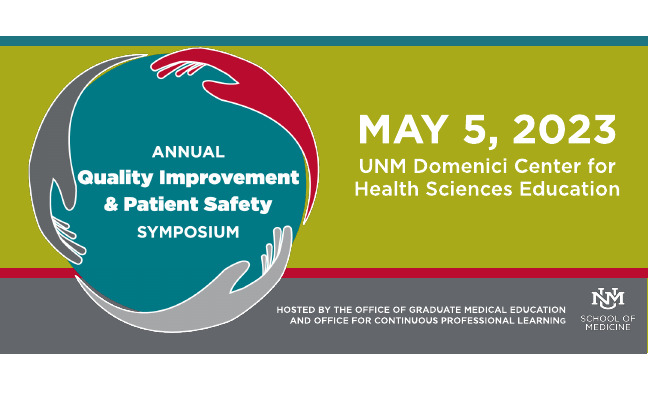Document Type
Poster
Publication Date
3-6-2020
Abstract
Introduction:
In 2018, there were 2,943 surgical site infections (SSIs) among patients who underwent abdominal hysterectomies in the U.S. and these account for substantial morbidity and increased healthcare costs. University of New Mexico Hospitals (UNMH) has had elevated rates of abdominal hysterectomy SSIs compared with national benchmarks. One of these benchmarks includes the Standardized Infection Ratios (SIRs). UNMH’s SIR is often >1 indicating more infections than predicted. In response, a multidisciplinary team created and then implemented a bundle to prevent SSIs. Our objectives were to assess SSI bundle compliance and its impact on SSI rates and numbers.
Materials/Methods:
We collected data by a retrospective chart review of patients who underwent abdominal hysterectomies at UNMH between January and December 2018. Patients were identified using CPT codes for abdominal, laparoscopic and robot-assisted hysterectomy. Co-morbid conditions that increase SSI rates were obtained. The bundle was implemented in March 2018. Select bundle elements were collected from the electronic medical record. Monthly average bundle compliance was determined and pre-implementation rates were compared to post-implementation timeframes. Pre- versus post-bundle implementation SSI rates were also compared. Results: In 2018, 291 surgeries were performed with just over 30% for malignancy. Ten patients developed SSIs with two superficial, one deep incisional, three intraabdominal and four vaginal cuff-related. Compliance with the five bundle elements on average was 85.5% for all of 2018 with temporary increase in bundle compliance for the 2 months after initial rollout; however, this continued to decline to a low of 81% by December 2018 (Figure 1). Compliance for specific bundle elements were less than 90% and these included blood glucose assessment on the day of surgery (68%) and maintaining patients’ periprocedural temperatures > 35.5oC (68%). Additionally, UNMH’s SIR was > 1.0 for the entirety of 2016 and for 50% of 2017. The SIR was also >1.0 for ¾ of our study period (2018) (Figure 2).
Conclusion:
Overall, abdominal hysterectomy SSI rates increased 2017 to 2018 rates (2.2% vs. 2.6%, respectively). However, the SSI prevention bundle compliance for elements assessed did not change over this same timeframe suggesting that bundle compliance did not impact SSI rates. However, other elements were not feasible to assess and these may have impacted outcomes. Ongoing elements to address include hypothermia, assessment of blood glucose for all patients prior to surgery, and to improve compliance so its effect can accurately be assessed.
Recommended Citation
Barlas, Yalda; Sydney Cooper; Marisa Griego; Sarina Pollat; Amber Lalla; Madeline Palmer; Mingma Sherpa; Niharika Ravichandran; Meghan Brett; and Cara Ninivaggio. "Impact of a Bundle to Prevent Hysterectomy Surgical Site Infections." (2020). https://digitalrepository.unm.edu/hsc_qips/42


Comments
Presented at the University of New Mexico Health Science 2020 Annual Quality Improvement and Patient Safety Symposium